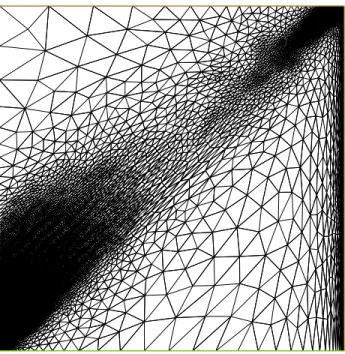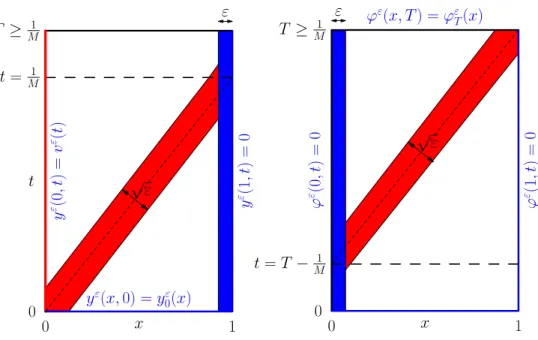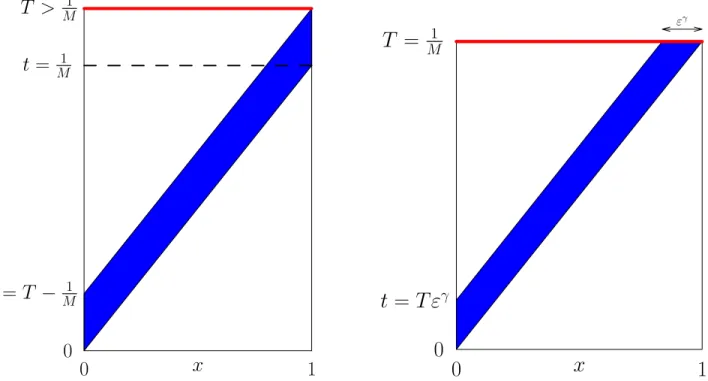On the controllability of an advection-diffusion equation with respect to the diffusion parameter: Asymptotic analysis and numerical simulations
Texte intégral
Figure


![Figure 3: Approximation λ ε h (0, t) of the control w.r.t. t ∈ [0, T ] for ε = 10 −1 , 10 −2 and 10 −3 ; T = L = −M = 1;](https://thumb-eu.123doks.com/thumbv2/123doknet/14562210.538529/19.918.103.815.121.319/figure-approximation-λ-ε-control-t-ε-t.webp)
![Figure 4: Cost of control K h (ε, T, M) w.r.t. ε ∈ [10 −3 , 10 −1 ] for T = 0.95T ? , T = T ? and T = 1.05T ? ; L = M = 1; r = h 2 - h = 1/320.](https://thumb-eu.123doks.com/thumbv2/123doknet/14562210.538529/20.918.102.813.131.325/figure-cost-control-k-ε-t-m-ε.webp)
Documents relatifs
The influence of the N interstitials on the diffu- sion coefficient is correlated with the low-temperature diffusion anomaly of H in the pure metals.. For H in pure Nb and pure
We show that the entropy method can be used to prove exponential con- vergence towards equilibrium with explicit constants when one considers a reaction-diffusion system
This idea has been used to design a numerical scheme that preserves both the compressible Euler and Navier-Stokes asymptotics for the Boltzmann equation of rar- efied gas dynamics
Recently we have treated the linear case of this renewal model with diffusion (see [1]), we proved the existence, uniqueness and positivity of the solution, and we showed that for
More importantly, we emphasize that in this work we deal with random permeability fields which are neither uniformly bounded from above nor below (with respect to the random
This question, however, will not be elucidated because we prove in Section 4 that the bulk diffusion coefficient is smooth up to the boundary.. Consider the resolvent
This result gives an intermediate rate, for the pathwise weak approximation, between the strong order rate and the weak marginal rate and raises a natural question : is it possible
(This is easily seen for instance on formula (1.2) in the special case of the radiative transfer equation with isotropic scattering.) At variance with the usual diffusion

![Figure 7: Approximation λ ε h (0, t) of the corresponding control w.r.t. t ∈ [0, T ] for ε = 10 −3 and T = L = −M = 1; r = h 2 - h = 1/320.](https://thumb-eu.123doks.com/thumbv2/123doknet/14562210.538529/22.918.298.623.130.409/figure-approximation-λ-ε-corresponding-control-t-ε.webp)
![Figure 8: Cost of control K(ε, T, M ) w.r.t. ε ∈ [10 −3 , 10 −1 ] for T = L/M and L = −M = 1; r = h 2 - h = 1/320.](https://thumb-eu.123doks.com/thumbv2/123doknet/14562210.538529/23.918.297.613.130.406/figure-cost-control-k-ε-t-m-ε.webp)


